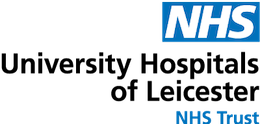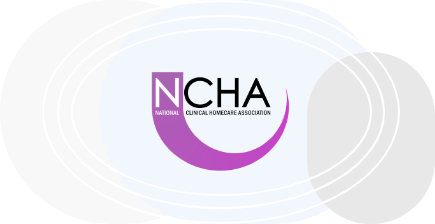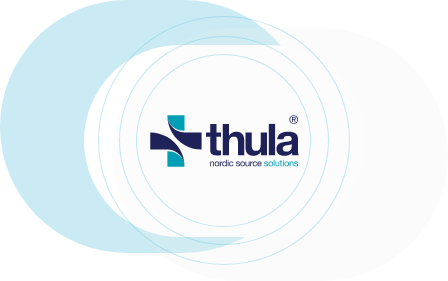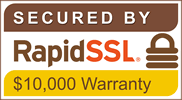Electronic Seals: Secure Your Documents Digitally
Electronic seals from E-Sign provide a secure and efficient way to authenticate and protect your important documents.

We're trusted by






eIDAS-Compliant Electronic Seals for Legal Entities
Enhance document security and trust with electronic seals.
Electronic Seals for Document Authentication: Payslips, Contracts & More
Concerned about document tampering and the potential for fraud? Electronic seals offer a powerful and reliable solution. Organisations across various industries use electronic seals to certify the origin of critical documents, including payslips, contracts, invoices, purchase orders, and other vital records. This process ensures document authenticity, builds trust with recipients, and prevents costly disputes.
Electronic seals, applied on behalf of legal entities such as businesses, institutions, and government agencies, guarantee document integrity and provide verifiable proof of origin. Explore the benefits of electronic seals and streamline your document workflows with our Business and Enterprise plans.

Address different use cases in Europe.
Electronic Seal vs. Electronic Signature
Even though they both rely on digital certificates, electronic seals and electronic signatures address different use cases in Europe, under the eIDAS regulation. An electronic signature can be used only by an individual to sign documents, such as contracts and applications.
However, electronic seals are used by (entities)—including organisations and governments—to show evidence of origin and integrity of documents.
With EU Advanced Electronic seals, a sender with the necessary user permissions, can add electronic seals to be applied to the document in the specified order in the workflow. An envelope can contain both electronic seals and electronic signatures if required.

Used by the author of the document.
Secure Your Documents: How to Add an eSeal
To learn more about adding an electronic seal to your documents, follow our detailed step-by-step guide to add an eSeal. An electronic seal ensures that your document is securely authenticated and can be trusted by recipients. It provides a layer of verification that traditional signatures might lack, making it an essential tool for secure digital transactions.
With our comprehensive guide, you’ll be able to navigate the process seamlessly, ensuring compliance and security for all your digital documentation needs.

Characterised by a digital certificate.
What Does an Electronic Seal Look Like?
Each electronic seal that is applied to a PDF document is characterised by a digital certificate. Its visual representation is the image which has been uploaded in the account settings.
Seals certificates are shown in its signature properties. When a user displays such a PDF document, one can notice the presence of the electronic seal by displaying the signature details.

Integrate with Leading Tools
Create bespoke workflows to suit your business with a range of application integrations.

















UK Government’s high-performance network
eSign is a UK government approved supplier
eSign is the only eSignature provider trusted on the UK Public Service Network (PSN) – proof that we meet the highest security, compliance, and interoperability standards.
We’re also on the Government’s Digital Marketplace, which enables buyers to select from a pre-approved list of suppliers.
For public sector organisations, this means your procurement and compliance teams get the reassurance of government-level due diligence already done – reducing risk and making roll-out smoother.
Business Benefits

Authenticity & Integrity
E-Seals offer peace of mind that your documents are authentic. Once the documents are sealed, the document cannot be tampered with, protecting both your signers and your business.

Keep Documents Digital
Using a digital seal means you can keep your documents digital, which eliminates the need to use paper-based processes and having increased security over your important documents.

Streamline & Save Time
Adopting a digital seal allows you to streamline your processes and save time on administration. Eliminate unnecessary steps from your workflow and benefit from increased productivity and efficiency.

Reduce Paper Consumption
By eliminating paper usage across your business, reduce spending on paper, stationary, and document storage and reduce the paper wase and carbon footprint your business generates.

Prepare for a Digital Future
Adopting a digital seal allows you to move away from paper and embrace a digital future. Stay ahead of your competitors in key areas; productivity, profitability, customer experience and employee satisfaction.
Advanced Audit Trail
Track and record your document transaction at every stage, with an easily retrievable, advanced audit trail for every signed document.
Featured Industries
Discover eSignature solutions and use cases in your industry.
eSign offers complete digital document solutions for healthcare organisations, streamlining processes, efficient transactions, and cost-effective services.
Learn More
Digital solutions for accountancy and tax, e-signatures for HMRC documents, book keeping and integrations into leading softwares.
Learn More
Streamline document turnaround and completion, increase compliance and elevate contract reviews with a digital document management solution.
Learn More
eSign offers digital solutions for educational organisations, from student enrolment, financial aid documents, HR documents and more.
Learn More
Digitise key financial agreements and workflows, do business faster and eliminate slow manual processes with an electronic signature.
Learn More
eSign provides digital solutions for organisations and individuals across all industries.
Learn More
Technical Checklist
- Signers receive a one-time passcode via SMS that must be entered before opening the documents
- All signed documents are supported by a digital signature certificate
- Scan a unique QR code for automatic accesses to the signature verification page
- Ensure high standards of security and compliance with a full audit trail
- A unique digital fingerprint is generated with each new signature
- For additional security and verification, IP addresses are recorded
- Ensure real time ID verification with eSign iD Checker
eSign Case Studies

National Clinical Homecare Association
The healthcare industry clearly recognised the need to adopt a digital approach to prescription processing, giving operational advantages, regulatory compliance and improvements to patient safety.

Mid Devon District Council
There has been significant time and cost savings on the sign-up process for new tenants as there is no longer a requirement for officers or tenants to travel to meet in a location to sign the agreement.

University Hospitals Leicester
The E-Sign implementation has achieved demonstrable improvements in service efficiency, supported cross-site working and reduced costs for the UHL Kidney Pharmacy home delivery services.
CHOOSE YOUR TEMPLATE TO SUIT YOUR BUSINESS NEEDS
Templates
eSign templates simplify document signing for your business, saving time and resources. Easily integrate electronic signatures into your workflow, whether it’s contracts, agreements, or other legal documents.





Frequently Asked Questions
What are Electronic Seals?
Electronic Seals provide a means to certify the authenticity and source of documents. A typical scenario involves a company affixing an electronic seal onto a contract prior to sending it for signing.
Is an Electronic Seal valid?
An electronic seal serves a valuable purpose in preserving the integrity of documents sent by a legal entity. However, it’s important to note that an electronic seal does not replace the need for electronic signatures. Instead, its primary function is to ensure authenticity, providing recipients with confidence that they have received the original, unaltered document.
What are the Use Cases of Electronic Seals?
Electronic seals have several practical applications, such as:
- Ensuring Data Integrity
- Sealing Automated Documents
- Confirming Automated Processes
- Securing Legal and Contractual Documents
- Maintaining Regulatory Compliance
These are just a few examples of how electronic seals are applied to protect the authenticity, integrity, and security of various types of documents and transactions.
Is the E-Seal Applied to Every Document in an Envelope?
With eSign, the electronic seal is only applied to the document to which you have applied it. Therefore, if you send 5 documents in an envelope, you only have to apply the e-seal to the document that requires it.
Are Electronic Seals Legally Recognised?
Electronic Seals were introduced as a solution for legal entities, allowing them to protect the authenticity and integrity of electronic documents and data. An Electronic Signature is based on the same technology as an Electronic Signature and also can be Advanced and Qualified.
The eIDAS regulation states that a Qualified Electronic Seal shall enjoy the presumption of integrity of all data and of correctness of the origin of that data to which the Qualified Electronic Seal is linked.
Distinguishing Electronic Signatures from Seals
While an electronic seal and an electronic signature are technically similar, there is a notable distinction between the two. An electronic signature can be linked to either a natural person or a legal person/entity, whereas an electronic seal is exclusively associated with a legal person/entity. This difference highlights that electronic signatures have broader applicability, whereas seals are specifically tied to legal entities.
Can an Electronic Seal Replace a Signature?
While an electronic seal shares similar mechanisms with an electronic signature, it differs in its purpose and implications. An electronic seal does not signify a commitment or engagement from the signatory regarding the document’s content, but rather focuses on ensuring the authenticity and origin of the data.
Here’s a breakdown of the distinction:
- Signature Commitment: A signature implies that the signatory has reviewed and agrees to the content of the document. It represents a personal endorsement and acceptance of the terms or information stated within the document.
- Seal Authentication: An electronic seal primarily serves to authenticate the integrity and origin of the data in the document. It assures the recipient that the document has not been tampered with and originates from the intended source.
While both electronic seals and signatures have their roles, it’s important to understand that using an electronic seal alone may not convey the same level of commitment or acceptance as a signature. If the document requires the explicit agreement or endorsement of the signatory, it is advisable to incorporate an electronic signature to signify consent and engagement.
Ultimately, the choice between using an electronic seal or signature depends on the specific requirements of the document and the desired level of commitment from the signatory.
What are the Benefits of using Electronic Seals?
- Increased security: Electronic seals provide a high level of security, ensuring that documents can’t be altered without detection.
- Improved efficiency: Electronic seals can automate the signing process, saving time and money.
- Enhanced trust: Electronic seals provide assurance to recipients that the document is authentic and from a trusted source.



































